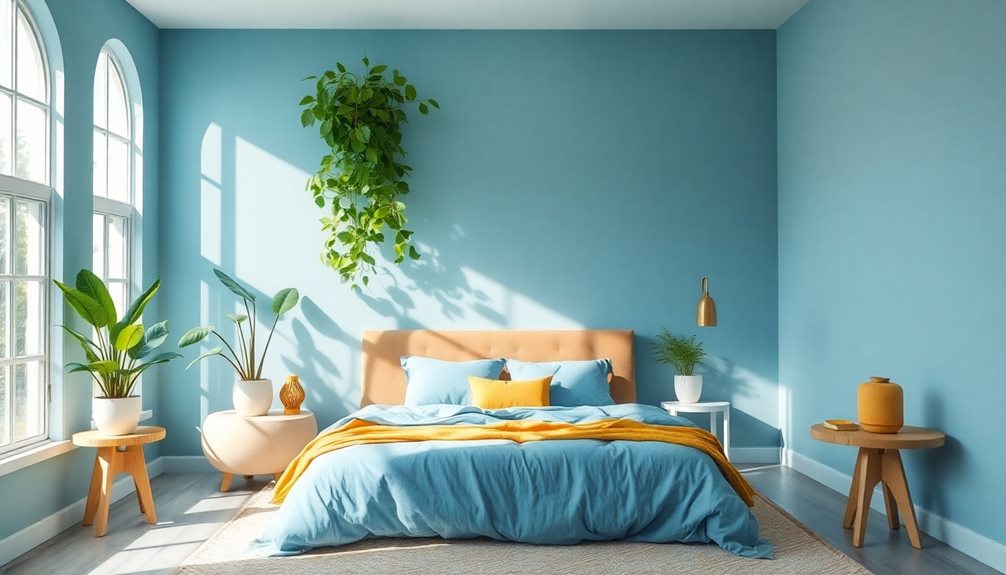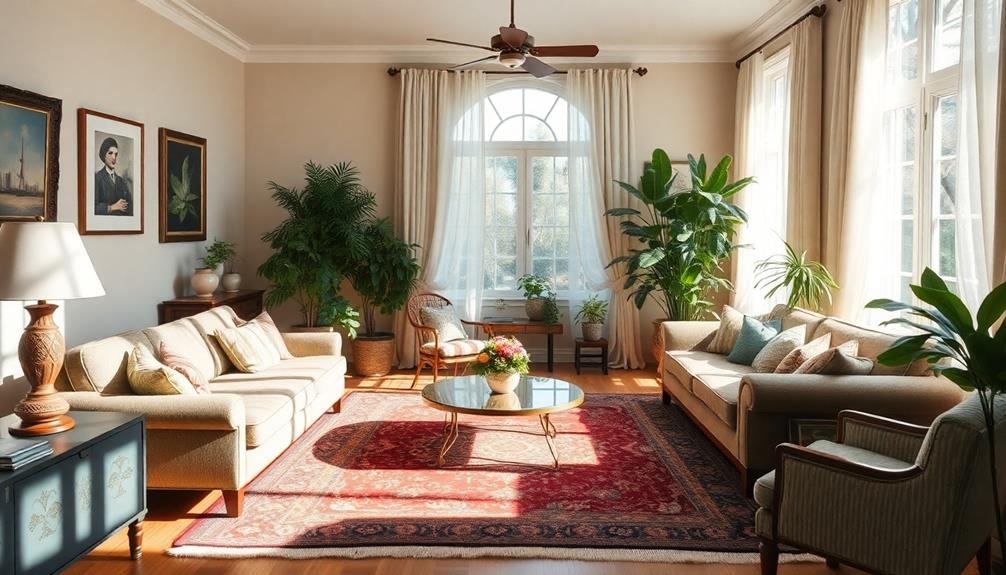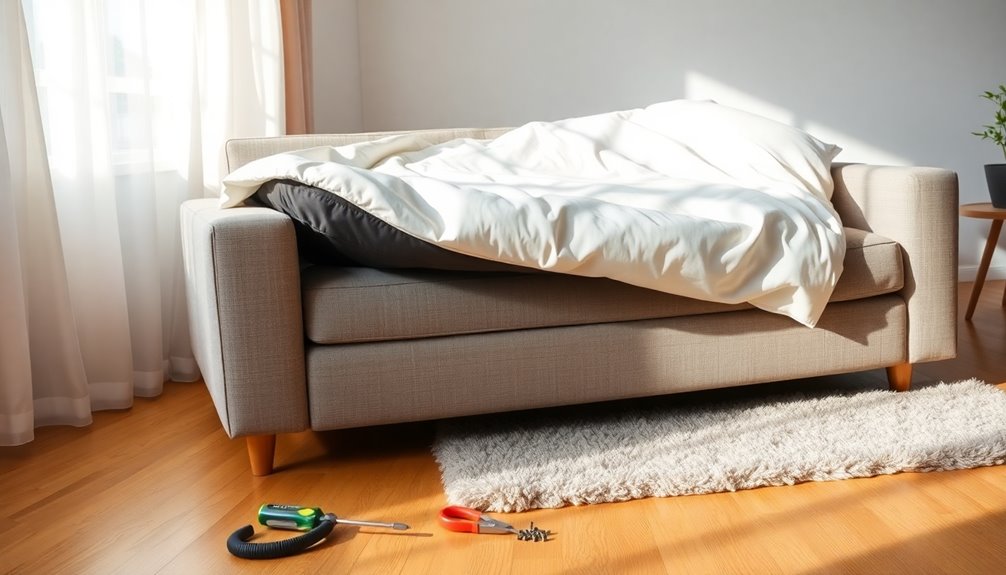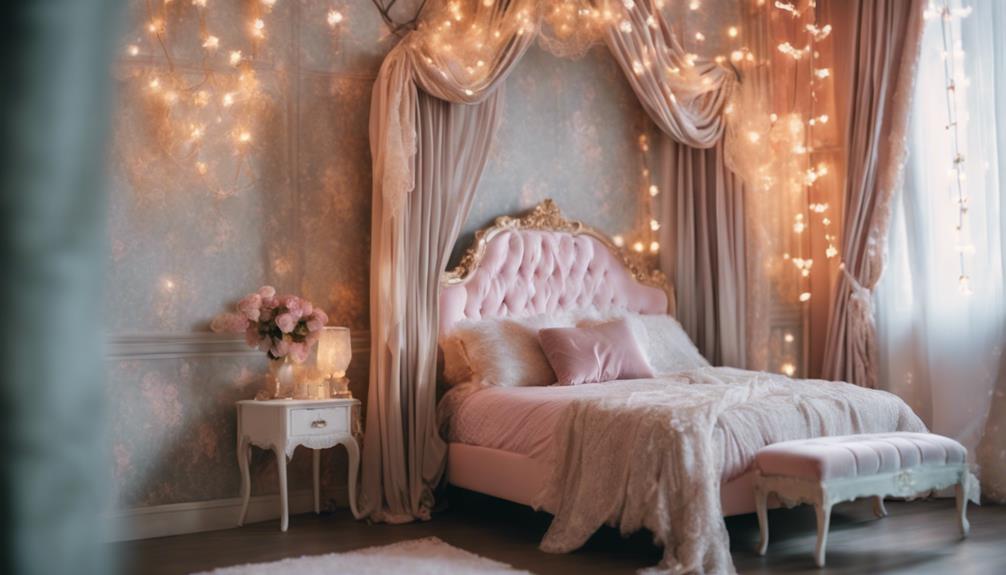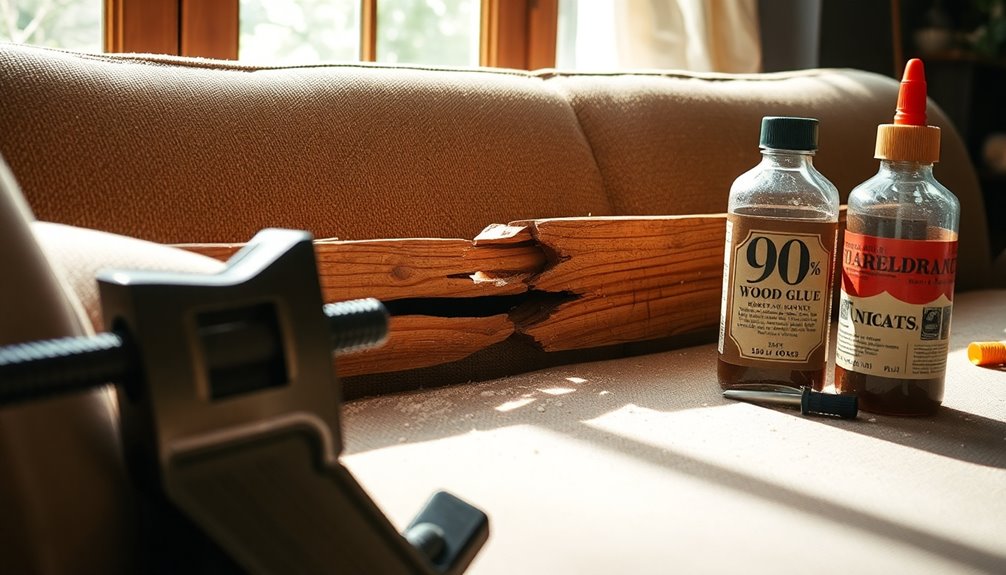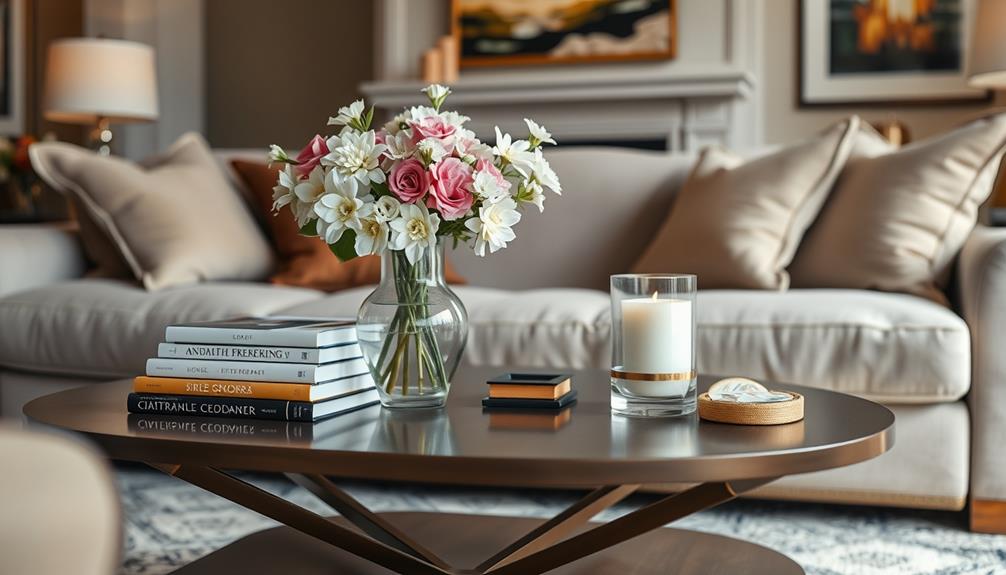Color psychology plays an essential role in room design, influencing emotions and creating desired atmospheres. By understanding color theory, you can select hues that evoke calmness, joy, or creativity. For instance, soft blues promote tranquility, while vibrant yellows can energize a space. Consider using structured color schemes like monochromatic or complementary to enhance visual appeal. Start with neutral walls to allow bold accents to shine. Testing colors in various lighting conditions is critical for accurate perception. If you want to master these concepts and learn strategies to apply them effectively, the journey towards vibrant and inviting spaces awaits you.
Key Takeaways
- Understanding color theory is essential; primary, secondary, and tertiary colors impact emotional responses and room ambiance significantly.
- Calming colors like blues and greens enhance tranquility, suitable for bedrooms, while yellows stimulate energy and happiness when used sparingly.
- Structured color schemes such as complementary and monochromatic create visual harmony and emotional resonance in design.
- Testing colors under different lighting conditions helps observe their effects throughout the day, ensuring appropriate mood settings.
- Consulting color experts can provide tailored schemes based on color psychology principles, enhancing overall aesthetics and preventing clashing palettes.
Understanding Color Theory
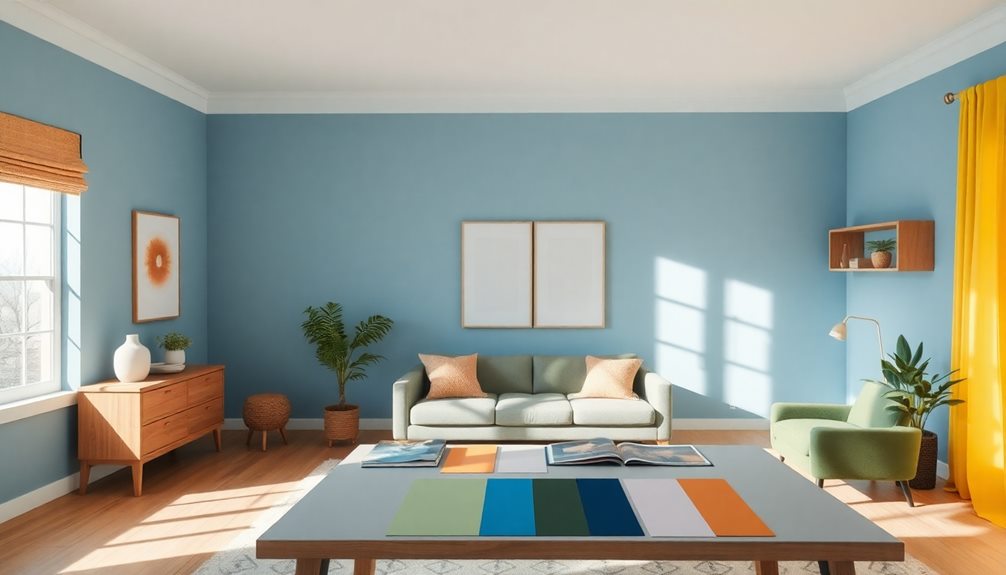
When you immerse yourself in color theory, you're exploring the science and art behind how colors interact and impact our emotions. This intriguing field combines physics and psychology to help you understand the psychological effects colors have on human perception.
The color wheel, developed by Isaac Newton, is your foundational tool, categorizing primary colors like red, yellow, and blue, which mix to create secondary and tertiary colors.
Understanding hue is essential, as it refers to the distinct color itself. When you modify a hue with tints, shades, or tones, you can achieve a variety of emotional responses.
Using structured color schemes, such as monochromatic, complementary, or analogous, allows you to blend colors effectively for aesthetic appeal and emotional resonance.
Incorporating calming colors, like soft blues and greens, can transform a space into a tranquil retreat, while vibrant yellows may evoke happiness and energy.
Emotional Impact of Colors

Colors considerably influence our emotions, often dictating the overall atmosphere of a room. Understanding the emotional impact of colors can enhance your design choices and create spaces that resonate with your feelings.
Here are three key colors and their effects:
- Blue: This color promotes calmness and focus, making it perfect for offices or study rooms. It helps you concentrate and reduces stress, creating a tranquil environment.
- Green: Associated with nature and rejuvenation, green evokes feelings of safety and tranquility. It's an ideal choice for bedrooms or living rooms where relaxation is a priority.
- Yellow: Linked to happiness and optimism, yellow can uplift a room's mood. However, use it sparingly, as too much intensity can lead to agitation.
Incorporating colors like purple can also spark creativity, with brighter shades invigorating a space and softer tones fostering serenity.
Color Schemes in Design
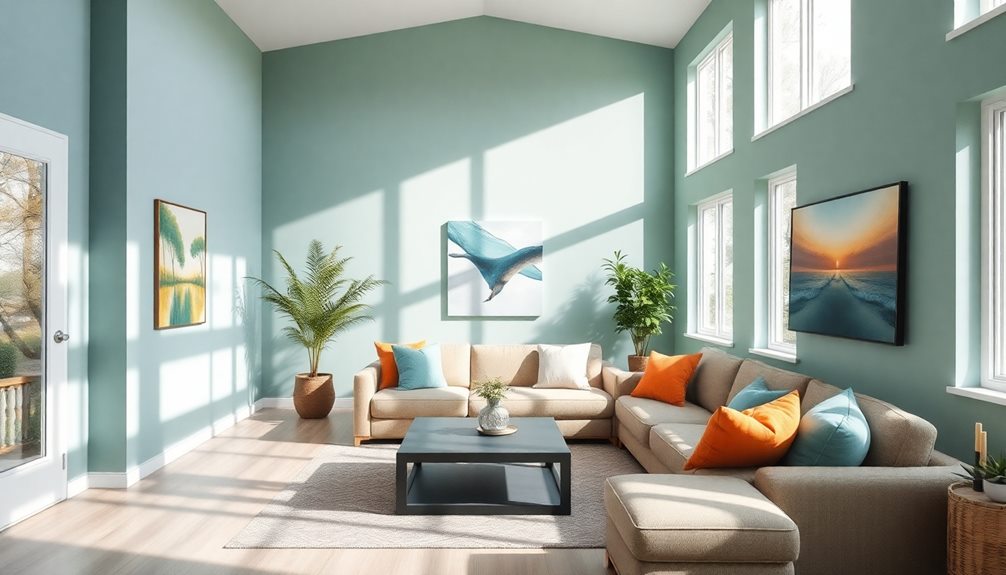
Color Schemes in Design
Choosing the right color scheme is essential for creating a harmonious and inviting environment in any room. Color schemes like complementary, monochromatic, and triadic play a vital role in establishing visual harmony and emotional impact.
For instance, complementary color schemes use colors opposite each other on the color wheel, generating vibrant contrast that energizes a space. In contrast, monochromatic schemes focus on variations of a single color, promoting cohesion and tranquility. Incorporating elements from your interior design mood board can enhance this process, allowing for a more cohesive design approach that reflects your desired atmosphere.
Creating an Interior Design Mood Board will help you visualize your choices effectively.
Analogous color schemes, which feature colors adjacent on the color wheel, create serene and comfortable settings, making them perfect for relaxation areas like bedrooms. On the other hand, triadic color schemes incorporate three evenly spaced colors, offering a balanced yet dynamic palette ideal for social spaces like dining rooms.
The proportions of colors you choose to implement greatly affect their interaction within the design. Bold colors should be balanced with neutrals to avoid overwhelming visuals, enhancing the overall aesthetic.
Staying attuned to current design trends can also guide your color choices, ensuring that your room design resonates with contemporary styles while reflecting your personal taste. Staying attuned to current design trends can also guide your color choices, ensuring that your room design resonates with contemporary styles while reflecting your personal taste. Incorporating elements like natural hues and sustainable materials not only enhances the aesthetic but also aligns with environmentally-friendly practices. For example, exploring zerowaste kitchen design ideas can inspire you to combine functionality with eco-consciousness, creating a space that’s both modern and mindful of the planet.
Practical Implementation Strategies

Incorporating color into your room design involves understanding how different hues influence mood and atmosphere.
To effectively use color psychology, you need to take into account the psychological effects of specific shades. Here are three practical implementation strategies:
- Choose Your Base: Start with a neutral color for your walls, like soft grays or whites, to create a calming backdrop. This allows you to incorporate an accent color, such as vibrant yellow, to add energy without overwhelming the space.
- Test Lighting: Use both natural and artificial lighting to see how your chosen room colors change throughout the day. Lighting can greatly affect color perception, so don't skip this step.
- Incorporate Elements: Utilize various elements like paint, textiles, and decorative accessories to weave your color scheme together.
For instance, balance calming blues in fabrics and art with your accent color to enhance the overall aesthetic.
Consulting Color Experts
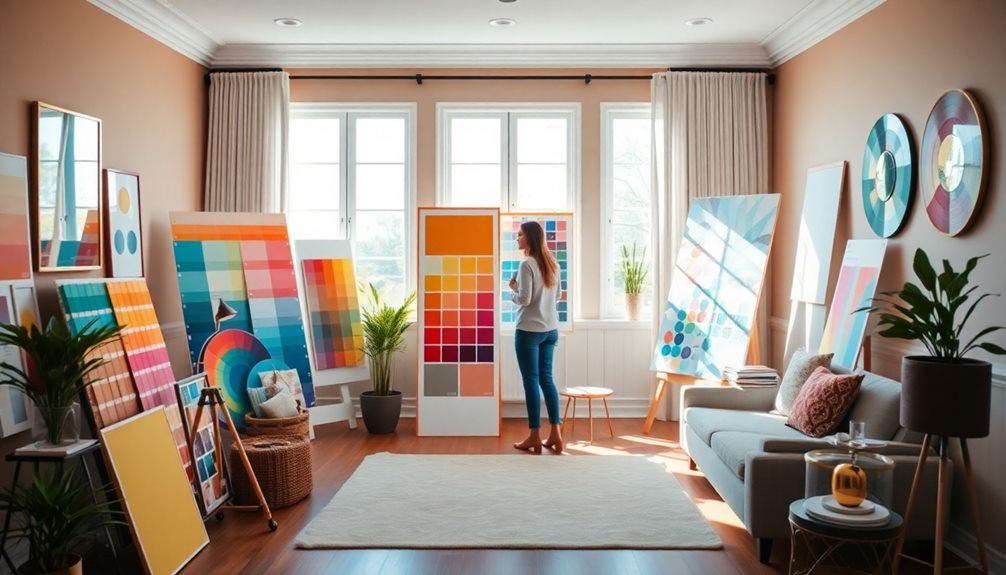
How can you guarantee your color choices truly resonate with your personal style and emotional needs? Consulting color experts can be the key. These professionals provide tailored color schemes that enhance your space's ambiance while aligning with your design preferences. Their expertise helps you navigate complex color theories and psychological impacts, assuring your selections support the intended mood and functionality.
During an in-home consultation, color experts assess your lighting, existing furnishings, and space dimensions, leading to well-informed color choices. They collaborate with interior designers to integrate color psychology principles, creating environments that promote well-being and comfort. By utilizing their knowledge, you can avoid the pitfalls of color overload or clashing palettes, resulting in a balanced design.
Here's a quick overview of the benefits of consulting color experts:
| Benefit | Description |
|---|---|
| Tailored Color Schemes | Aligns with your emotional needs and style |
| In-Home Consultation | Evaluates your space for informed choices |
| Psychological Insight | Assures colors support desired mood and function |
| Collaboration | Works with interior designers for cohesive design |
| Balanced Aesthetics | Prevents color overload and enhances ambiance |
With their guidance, you can create a harmonious and inviting space.
Continuous Learning in Color Psychology
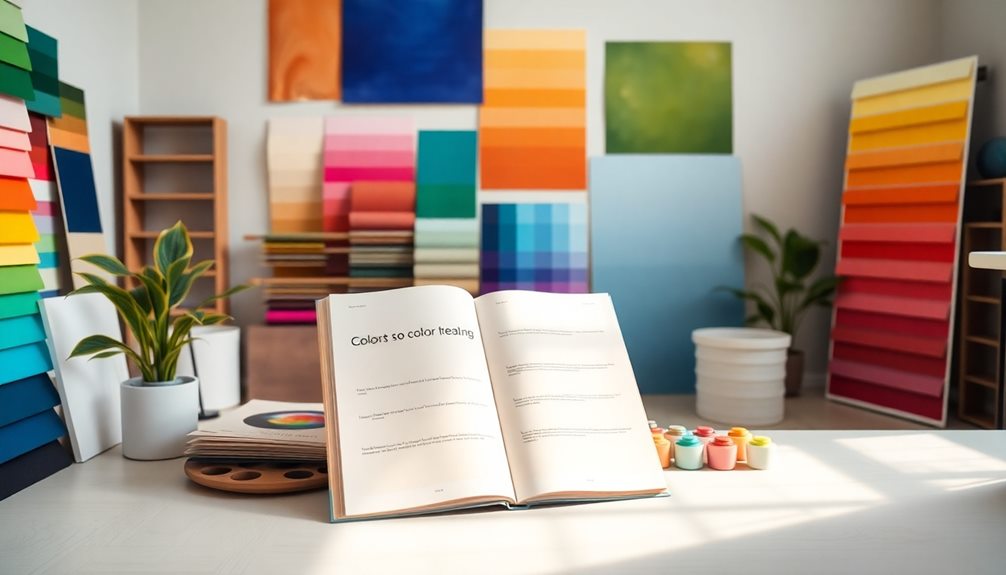
Staying current in color psychology can open up new avenues for enhancing your design projects. By engaging in continuous learning, you'll not only grasp the latest findings on how colors influence mood and behavior but also apply them practically in your work.
Here are three ways to keep your knowledge fresh:
- Participate in Workshops: Join workshops or webinars that focus on color theory and its practical applications. These events often feature insights from experts, providing invaluable knowledge about psychological effects and design trends.
- Explore Online Courses: Enroll in online courses that explore color interactions and the evolving perceptions of color in society. This structured learning can deepen your comprehension and inspire innovative ideas.
- Utilize Community Resources: Connect with other designers and color experts through community resources. Engaging in discussions fosters collaboration and can lead to fresh concepts in your projects.
Frequently Asked Questions
What Is the Psychology of Colors in a Room?
Colors in a room affect how you feel and behave. For instance, blue calms you, while red energizes conversations. Choosing colors mindfully can enhance your mood and create the atmosphere you want in your space.
What Is the Science of Color in Interior Design?
Think of color as the soul of a room. The science of color in interior design explores how hues influence emotions and behaviors, shaping your experience and interactions within a space, creating harmony or evoking feelings.
What Is the Science Behind Color Psychology?
The science behind color psychology explores how colors affect your emotions and behaviors. Different hues can trigger specific feelings, influencing your mood, decisions, and even cognitive functions, shaping your overall experience in various environments.
How Do Interior Designers Use Color Psychology?
Imagine walking into a room that instantly lifts your spirits. Interior designers use color psychology to evoke emotions, selecting hues that energize, calm, or inspire, ensuring each space feels just right for you.
Conclusion
Incorporating color psychology into your room design can transform your space and mood. Did you know that 85% of consumers make decisions based on color? This statistic highlights just how powerful color can be in influencing emotions and behaviors. By understanding color theory and choosing the right schemes, you can create an environment that not only looks good but also feels right. Embrace these strategies, and you'll enhance both your space and your well-being.
